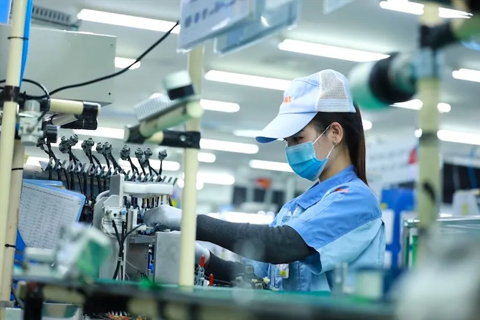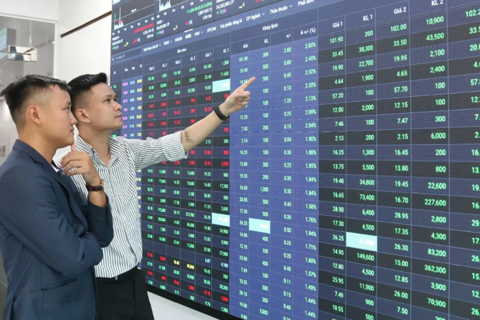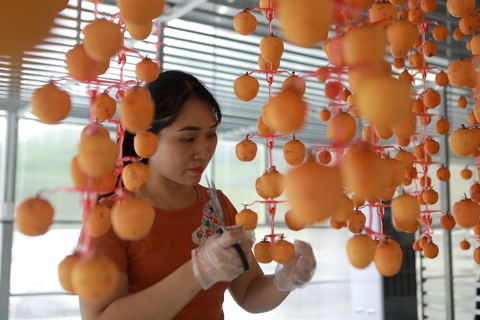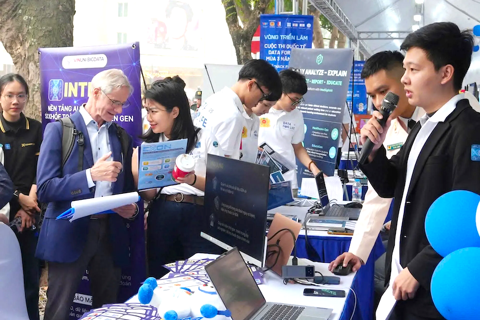Business
LG Display to invest 1.1 billion USD for OLED plant in Vietnam
Dec 05, 2017 / 07:27 PM
Korea’s LG Display on Nov. 30 approved a funding plan worth 1.19 trillion won (US$1.10 billion) for the expansion of its Vietnamese module plant, apparently in a preemptive move to reduce risks from the government’s delayed approval for its first OLED plant in China.
Previously, in May 2016, LG Display Vietnam has started constructing its plant in Dinh Vu – Hai Phong economic zone to produce display screen for smart phones with total registered capital of 1.5 billion USD. This is the first large scale plant of LG to be located oversea. The cheap labor and location near China are considered as the major factors for LG to build this plant. When panels are produced, the module plant assembles them before shipment. Even though its plans for Chinese production has not yet been approved, the display maker seems to have started preparations in Vietnam.
The funding plan for the Vietnamese unit, LG Display Vietnam Haiphong, comprises of US$600 million debt and US$500 million capital increase. Considering the uncertainties surrounding regulatory approval, the company has decided to carry out the plan in phases over the next four years. In July this year, LG Display asked for the government’s permission to build its first overseas OLED plant worth 5 trillion won in China.
OLED is one of the nation’s designated key technologies that receive state subsidies so any plans for building a plant overseas should get government approval. A government panel has delayed its decision for months citing possible tech leaks to Chinese rivals. During the period, concerns are also growing that the display maker could lose the right timing for OLED investments amid surging demand and fierce competition with rivals. The firm says the planned Chinese plant will focus on producing larger OLED panels for TVs. Sources say the Vietnamese expansion is also aimed at responding to the increased TV panel production. The government’s decision is expected to be announced this month.
Vietnam continues to become the ideal destination for investment from Korean companies. When in this December, another Korean company chemical maker Hyosung will break ground on a 1.2 billion USD complex capable of cranking out 600,000 tons of polypropylene annually in Vietnam.
Located in Vietnam's southeastern province of Ba Ria-Vung Tau, the production hub -- Hyosung's first overseas plant -- is expected to start operating at the end of 2019. Together with an existing factory in Ulsan, South Korea, the company's total yearly capacity will jump to 1.3 million tons. That would transform Seoul-based Hyosung into the largest South Korean maker of polypropylene, besting domestic rivals like Lotte, which has an estimated production capacity of 1.1 million tons. Hyosung seeks sales of about 2 trillion won (1.83 billion USD) in 2020 from its polypropylene business, up from the roughly 1 trillion won seen logged in 2016. For that, it is positioning the Vietnamese plant as a gateway to the Japanese market.
Some 100,000 tons of the polypropylene produced in Vietnam will be shipped to Japan. Japanese automakers are increasingly adopting plastics in auto bodies to improve fuel efficiency, and Hyosung aims to capture some of that demand. Hyosung first established its Japanese arm, Hyosung Japan, over three decades ago, but the unit's annual polypropylene sales are stuck at around 10,000 tons.

Korean companies such as LG is increasing investment activities in Vietnam.
|
OLED is one of the nation’s designated key technologies that receive state subsidies so any plans for building a plant overseas should get government approval. A government panel has delayed its decision for months citing possible tech leaks to Chinese rivals. During the period, concerns are also growing that the display maker could lose the right timing for OLED investments amid surging demand and fierce competition with rivals. The firm says the planned Chinese plant will focus on producing larger OLED panels for TVs. Sources say the Vietnamese expansion is also aimed at responding to the increased TV panel production. The government’s decision is expected to be announced this month.
Vietnam continues to become the ideal destination for investment from Korean companies. When in this December, another Korean company chemical maker Hyosung will break ground on a 1.2 billion USD complex capable of cranking out 600,000 tons of polypropylene annually in Vietnam.
Located in Vietnam's southeastern province of Ba Ria-Vung Tau, the production hub -- Hyosung's first overseas plant -- is expected to start operating at the end of 2019. Together with an existing factory in Ulsan, South Korea, the company's total yearly capacity will jump to 1.3 million tons. That would transform Seoul-based Hyosung into the largest South Korean maker of polypropylene, besting domestic rivals like Lotte, which has an estimated production capacity of 1.1 million tons. Hyosung seeks sales of about 2 trillion won (1.83 billion USD) in 2020 from its polypropylene business, up from the roughly 1 trillion won seen logged in 2016. For that, it is positioning the Vietnamese plant as a gateway to the Japanese market.
Some 100,000 tons of the polypropylene produced in Vietnam will be shipped to Japan. Japanese automakers are increasingly adopting plastics in auto bodies to improve fuel efficiency, and Hyosung aims to capture some of that demand. Hyosung first established its Japanese arm, Hyosung Japan, over three decades ago, but the unit's annual polypropylene sales are stuck at around 10,000 tons.








